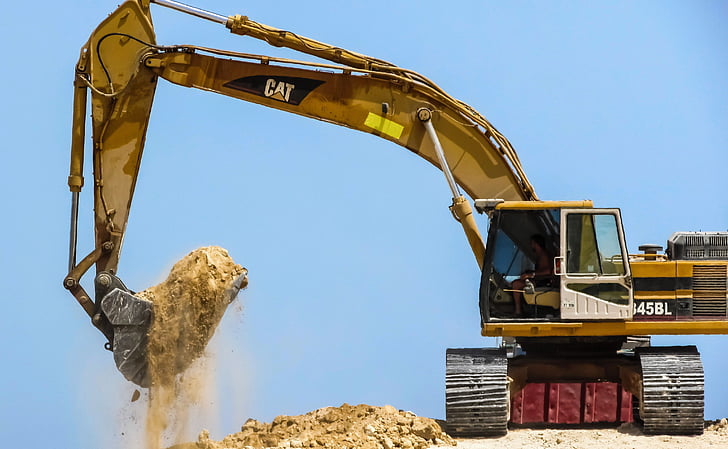The Role of IoT in Predictive Maintenance for Manufacturing Operations
Predictive maintenance is a cutting-edge approach that leverages technology to predict equipment failures before they occur, allowing manufacturers...
3 min read
Ömer Ali Güneş
:
Jul 20, 2023 11:29:48 AM
The Industrial Internet of Things (IIoT) is transforming the manufacturing industry, enabling manufacturers to collect and analyze data from connected devices and machines to improve efficiency, productivity, and quality.
IIoT is a network of physical devices, vehicles, buildings, and other items embedded with sensors, software, and network connectivity to collect and exchange data.
This data can be used to monitor the performance of equipment, identify potential problems, and predict when maintenance is needed.
IIoT can also be used to automate quality control, optimize production planning, and track inventory levels.
We will discuss three ways that IIoT and smart manufacturing can be used to maximize efficiency.
3. Optimized Production Planning
RELATED:
TOP IOT INDUSTRY 4.0 MANUFACTURING USE CASES
1. Predictive Maintenance
By connecting sensors to machines and equipment, IIoT can collect data on their performance. This data can then be used to predict when maintenance is needed, preventing unexpected downtime and costly repairs.
Predictive maintenance can be used to monitor a wide range of equipment, including engines, pumps, motors, and conveyor belts.
The data collected can be used to predict when the equipment is likely to fail, based on factors such as wear and tear, operating conditions, and environmental factors. Once a failure is predicted, manufacturers can schedule maintenance before the problem occurs, preventing unplanned downtime and costly repairs.
 Caterpillar, an American manufacturer of heavy machinery, used IIoT to monitor the health of its engines.
Caterpillar, an American manufacturer of heavy machinery, used IIoT to monitor the health of its engines.
For example, Caterpillar, an American manufacturer of heavy machinery, used IIoT to monitor the health of its engines.
The data collected showed that the engines were starting to wear out, so the manufacturer was able to schedule preventive maintenance before any problems occurred.
This saved the manufacturer millions of dollars in unplanned downtime and repairs.
Another example is Kraft Heinz, an American manufacturer of food products. The company used IIoT to monitor the temperature and humidity in its warehouses.
This data was used to predict when the products were at risk of spoilage, so the company could take action to prevent the loss of inventory.
RELATED:
ANALYSIS THAT SHAPES THE FUTURE: PREDICTIVE ANALYSIS
2. Automated Quality Control
IIoT can also be used to automate quality control. Sensors can be used to monitor the quality of products as they are being manufactured, and any deviations from the specifications can be flagged immediately. This helps to ensure that only high-quality products are shipped to customers.
Automated quality control can be used to monitor the quality of a wide range of products, including food, pharmaceuticals, and electronics.
The sensors used to monitor the quality of products can measure a variety of things, such as weight, size, shape, color, and temperature. If the sensors detect any deviations from the specifications, the product can be automatically rejected. This helps to ensure that only high-quality products are shipped to customers.
GlaxoSmithKline, a British multinational pharmaceutical, consumer healthcare, and vaccines company used IIoT to automate quality control for its pills.
Sensors were placed on the production line to monitor the weight, size, and shape of the pills. Any pills that did not meet the specifications were automatically rejected. This helped the manufacturer to reduce the number of defective pills and improve its overall quality control.
 GlaxoSmithKline used IIoT to automate quality control for its pills.
GlaxoSmithKline used IIoT to automate quality control for its pills.
3. Optimized Production Planning
IIoT can also be used to optimize production planning. By collecting data on demand, inventory, and production capacity, manufacturers can make better decisions about how to allocate resources and schedule production. This can help to reduce waste and improve efficiency.
Optimized production planning can be used to make better decisions about a wide range of factors, including the allocation of resources, the scheduling of production, and the forecasting of demand.
The data collected can be used to identify the most efficient way to produce products, while also meeting customer demand. This can help manufacturers to reduce waste, improve efficiency, and save money.
For example, IKEA, a Swedish furniture manufacturer, used IIoT to optimize its production planning. The company collected data on customer orders, the availability of raw materials, and the capacity of its production lines.
This data was then used to create a production plan that maximized efficiency and minimized waste. The company was able to reduce its production costs by 15% and improve its customer service by 20%.
Another example is Zara, a Spanish manufacturer of clothing. The company started using IIoT to track the popularity of its products on social media in 2016.
This data was used to forecast demand and adjust production accordingly. This helped the company to reduce its inventory levels and improve its cash flow.
RELATED:
INDUSTRY 5.0: THE FUTURE OF MANUFACTURING
 Zara started using IIoT to track the popularity of its products on social media in 2016.
Zara started using IIoT to track the popularity of its products on social media in 2016.
These are just a few examples of how IIoT and smart manufacturing can be used to maximize efficiency. As the technology continues to develop, we can expect to see even more ways to use IIoT to improve the manufacturing process.
Some Takeaways
Here are some interesting statistics about IIoT and smart manufacturing:
IIoT and smart manufacturing are transforming the manufacturing industry, and the benefits are significant.
By collecting and analyzing data from connected devices and machines, manufacturers can improve efficiency, productivity, quality, and cost savings.
Conclusion
IIoT and smart manufacturing are powerful tools that can help manufacturers to improve their operations. By harnessing the power of data, manufacturers can make better decisions, optimize their processes, and reduce waste.
As technology continues to develop, we can expect to see even more ways to use IIoT to transform the manufacturing industry.
RELATED:
THE ROLE OF BIG DATA IN LOGISTICS AND SUPPLY CHAIN MANAGEMENT

Predictive maintenance is a cutting-edge approach that leverages technology to predict equipment failures before they occur, allowing manufacturers...

In recent years, there has been a growing recognition of the importance of sustainability in all aspects of our lives. One crucial area where...

The manufacturing industry has come a long way since the Industrial Revolution. From the introduction of steam power to the rise of automation,...